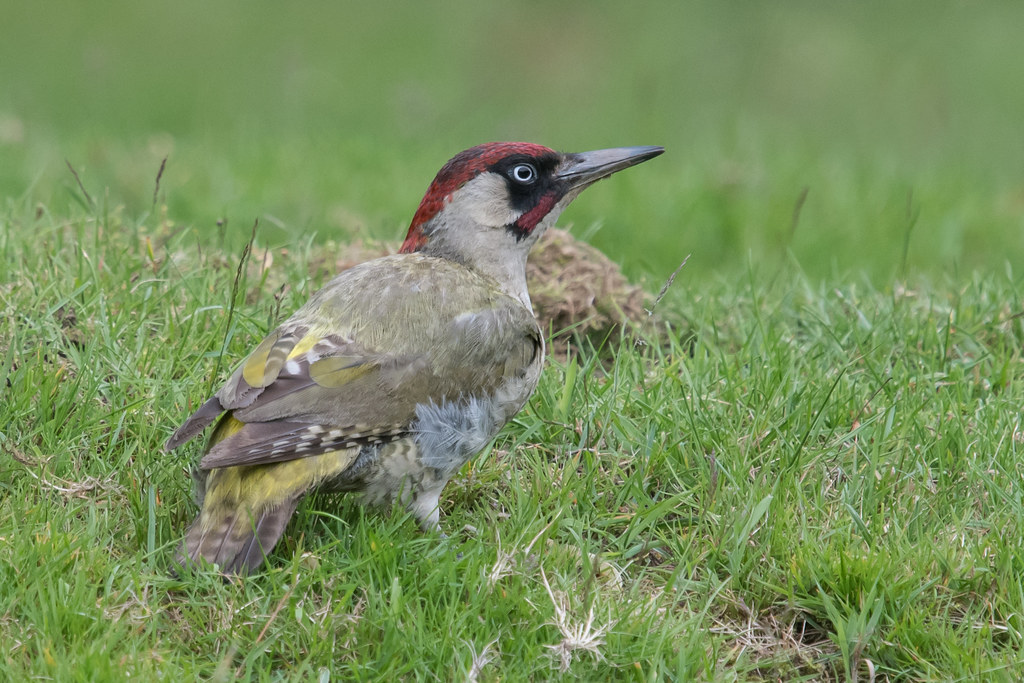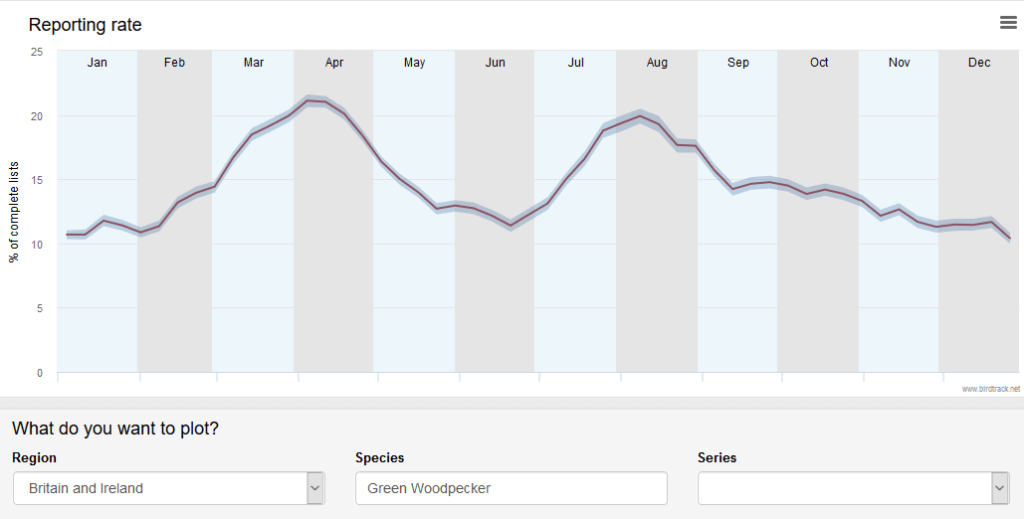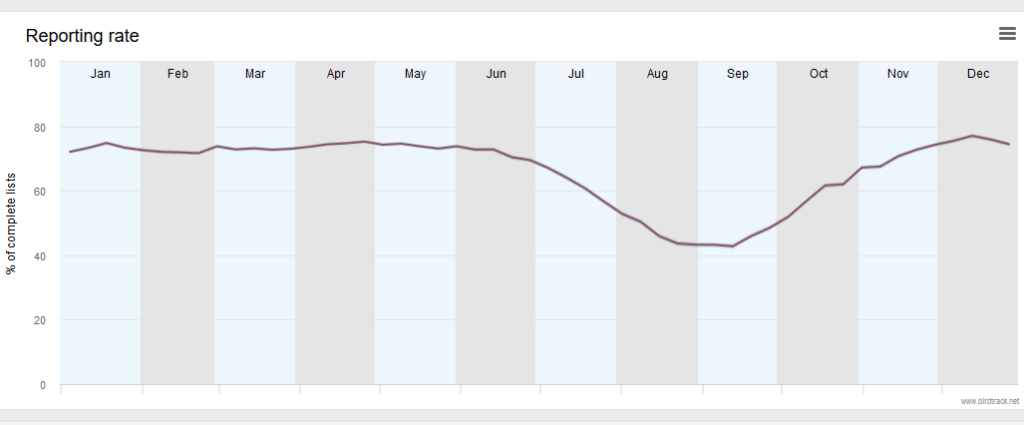
Tim Melling’s photographs and text on Green Woodpeckers on Saturday were well-timed for me because on my recent visits to Stanwick Lakes, my local patch, I’ve recorded Green Woodpeckers on each recent visit even though I’ve not seen a single one. They are very shouty at this time of year. And I’ve heard some from the garden too.
Here’s the BirdTrack reporting rate graph:

I wonder what that is all about? I’ve always thought that Green Wodpeckers just look like a species that might have an interesting social behaviour but would be quite difficult to study. There are lots of woodpeckers that do have interesting social behaviour – our Greens are not likely to be on a par with Acorn Woodpeckers but you never know what they might be getting up to.
What do you think this species is?;

Answer tomorrow, with another reporting rate graph to look at.
[registration_form]
Green Woodpeckers are for me a special bird although I don’t see them at all often where I now live in mid Wales.
When I was I suppose a beginning birder I saw them regularly around Harrogate golf course until the winter of ’62-63 when they were suddenly gone ( as were of course lots of other birds, Wrens, Kingfishers, Little Owls, Barn Owls to name a few). It took them several years to return from that nadir, by which time I had found them in mid and upper Nidderdale and around Fountains Abbey. They have fantastic calls and in the hand for ringing (not a frequent occurrence, although I once caught 4 in an afternoon in a Herefordshire orchard) they are just stunning. Just great birds to have around but then aren’t most birds.
They are very active “hide and seekers” behind tree trunks.
Their bigger, Black cousins are even worse (ie better).
Many years ago my first experience of Black Woodpecker (Spillkråka ie spill crow in Swedish) was when I was searching high and low for a buzzard-like call of a high-flying mysterious raptor which eventually turned out to be a Black Woodpecker “mewing” low down behind a nearby tree trunk.
I’m lucky enough to have one visit my lawn to snack on ants every now and then.
The Green Woodpecker’s ‘shouty’ alarm call appears to have a marked seasonality. It is very infrequent all winter and spring. But come Week 23 (4-10 June) the call’s frequency increases exponentially reaching a peak at the end of July after which there’s a fairly steep decline into the autumn period.
The birds ‘laughing’ song has an even more precise calendar, peaking sharply in output in Week 14 (2-8 April) most years.
Correction, the bird’s alarm call profile is badly described:
The call frequency plot for 2009-19 gives a plateau of peaks from around mid-July to the beginning of August (weeks 29-31).
Blackbird?
Robin?.